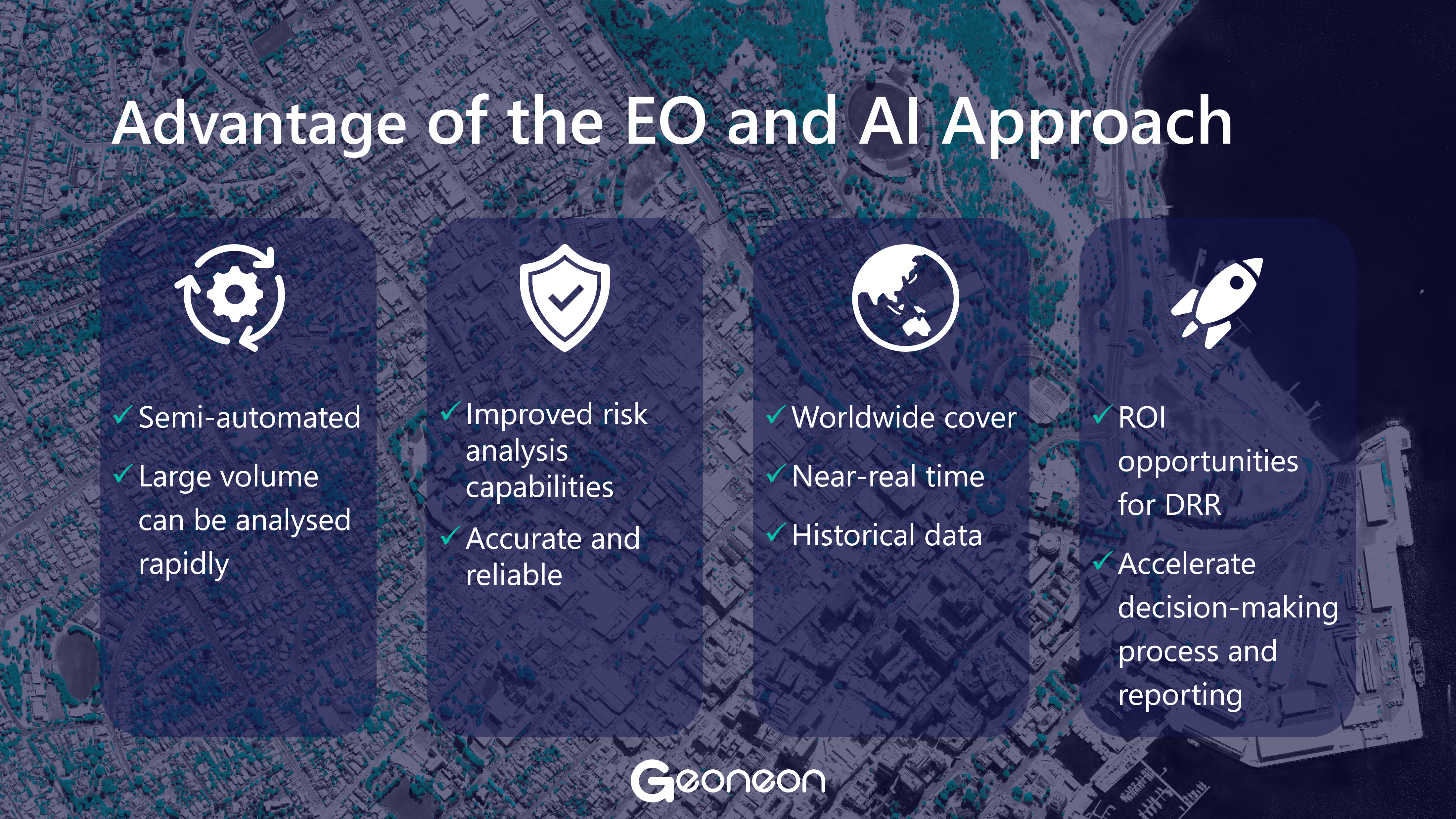Disaster risk reduction is a critical aspect of ensuring the safety and well-being of communities around the world. One effective way to improve disaster risk reduction efforts is through the use of earth observation and artificial intelligence (AI).
Earth observation refers to the collection of data about the earth and its environment through the use of satellites and other remote sensing technologies. This data can provide valuable insights into various aspects of the earth's surface, including land use, vegetation, and natural hazards such as flood, wildfire, landslide, and heatwaves.
AI, on the other hand, is a rapidly-evolving field that involves the use of machine learning algorithms to analyze and interpret large datasets. When combined with earth observation data, AI can help identify patterns and trends that may not be immediately apparent to the human eye, providing valuable insights into the likelihood and potential impact of natural disasters.
One key benefit of using earth observation and AI for disaster risk reduction is the ability to quickly and accurately assess the potential impact of a disaster. This can help decision-makers and emergency response teams to better allocate resources and take appropriate action to mitigate the effects of a disaster.
In addition, earth observation and AI can help to improve the accuracy of early warning systems, allowing communities to evacuate or prepare in advance of a disaster. This can greatly reduce the risk of injury and loss of life, as well as minimize the economic impact of a disaster.
Overall, the use of earth observation and AI is a powerful tool for improving disaster risk reduction efforts and is an important aspect of ensuring the safety and well-being of communities around the world.


